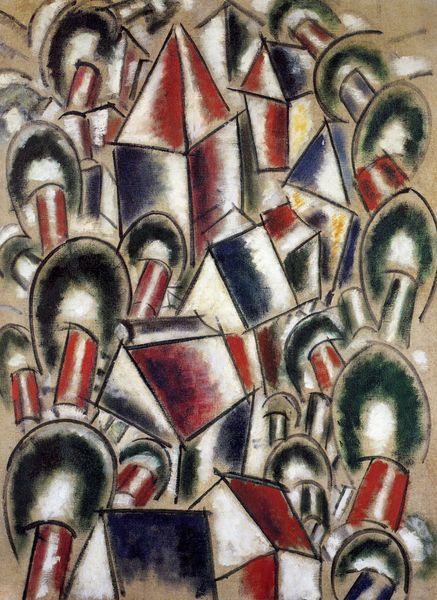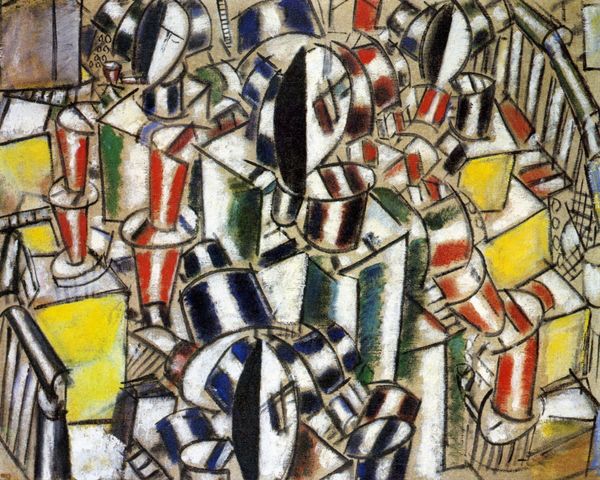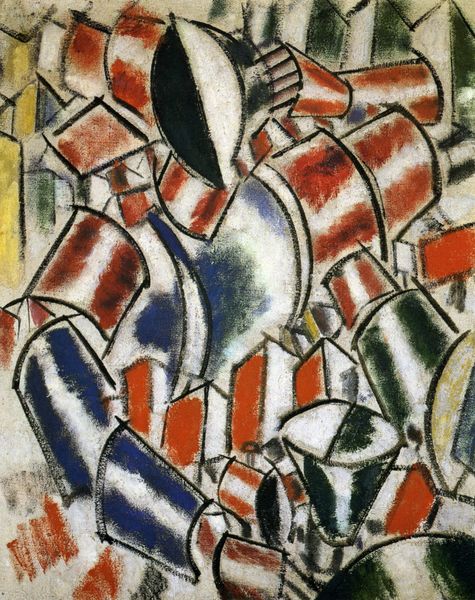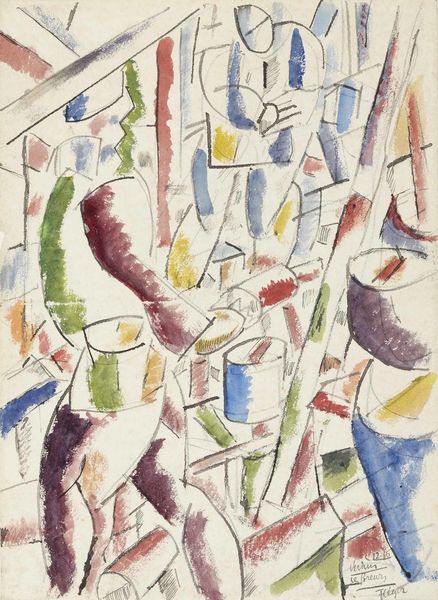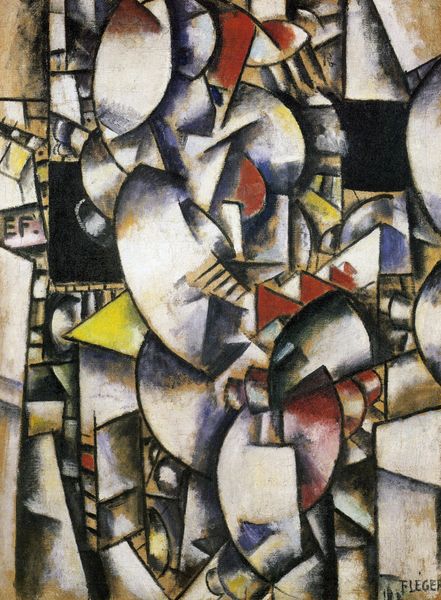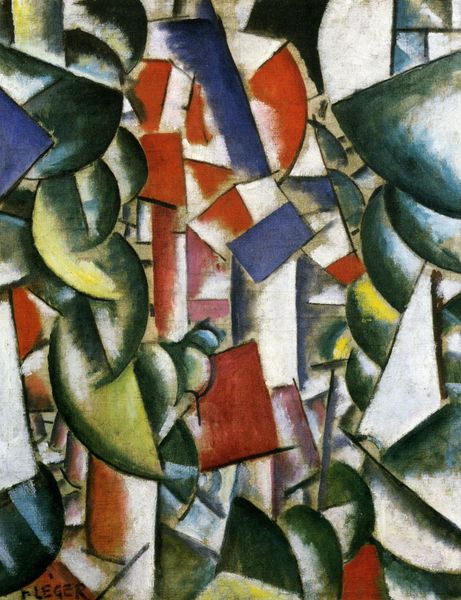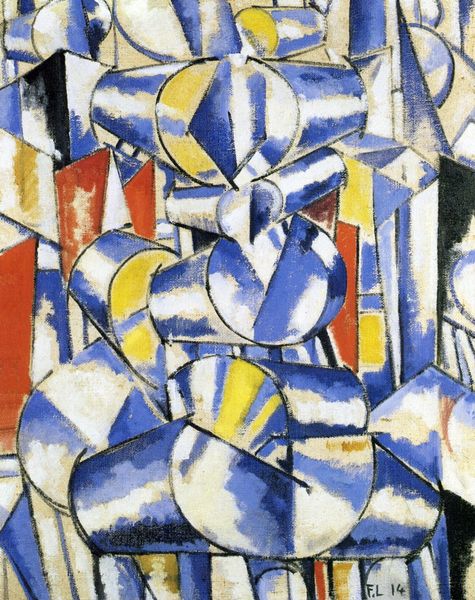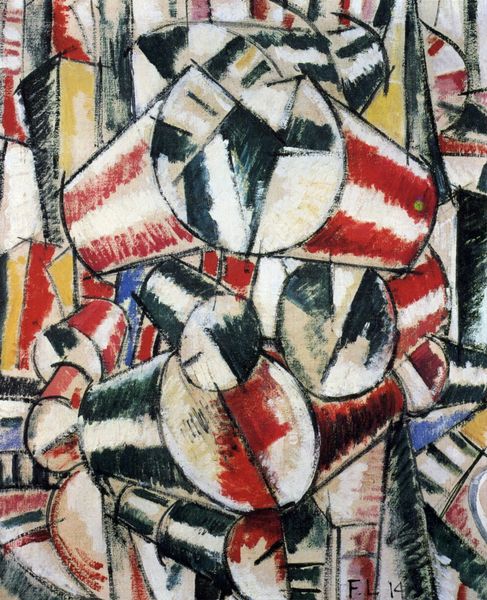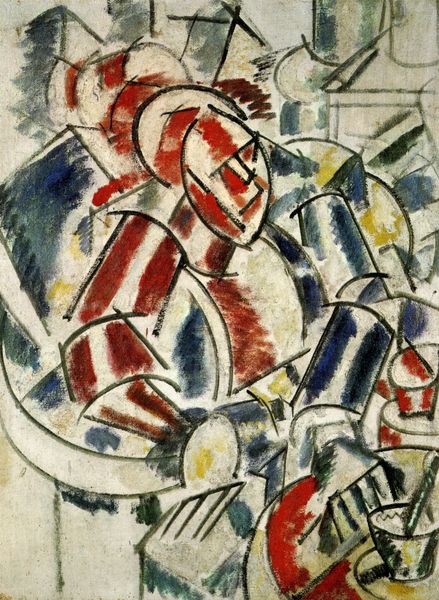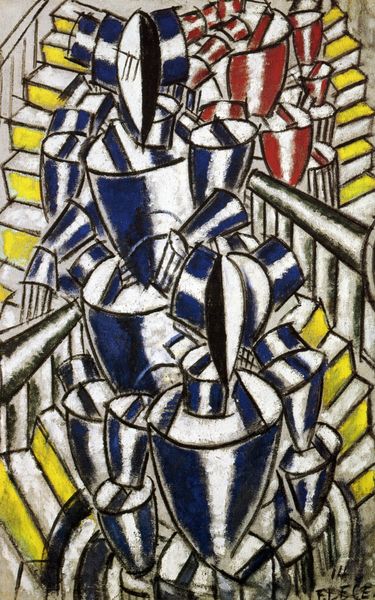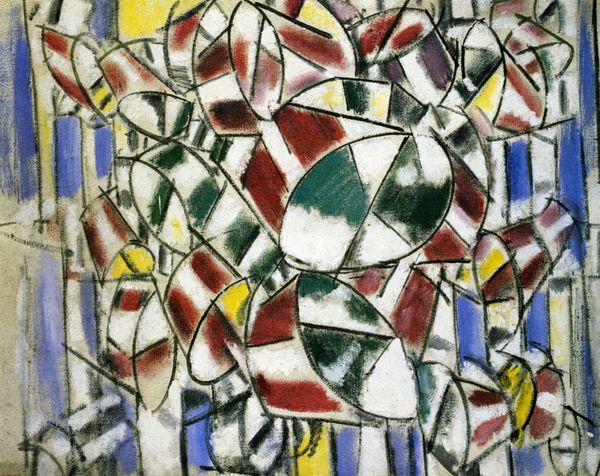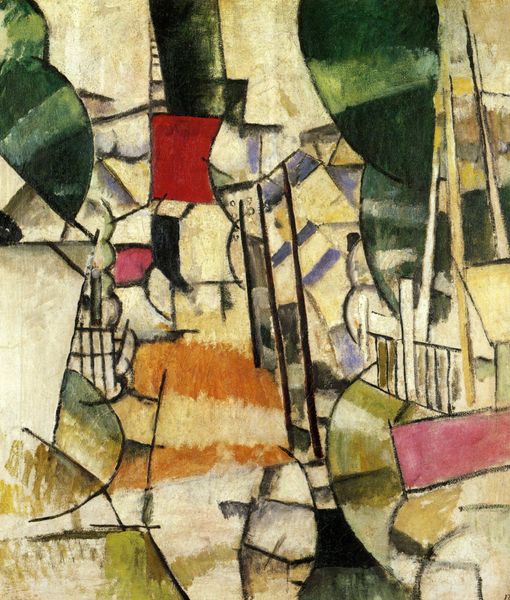
painting, oil-paint
#
tree
#
cubism
#
abstract painting
#
painting
#
oil-paint
#
house
#
form
#
forest
#
geometric
#
abstraction
#
cityscape
#
building
Copyright: Public domain US
Curator: Léger’s "The House in the Trees," painted in 1913 with oil on canvas, confronts us with a jarringly beautiful architectural-arboreal clash. Editor: Clash is right! At first glance, it’s unsettling—a forest of cylinders topped with domes pushing into the sharp edges of buildings. Are we witnessing urban sprawl devouring nature, or some strange, symbiotic harmony? Curator: It resonates, doesn’t it, with early 20th-century anxieties around industrialization. The forest has long been symbolic in art, from fairy tales onwards, as both refuge and something wild. Editor: And look at the colors. They are bold, yet muted—the deep blues and fiery oranges juxtaposed with the industrial grey, which almost makes the natural world feel mechanized, doesn’t it? As if the very idea of a forest is being processed through factory. Curator: Yes! Notice how Léger reduces form to pure geometry, and by doing so challenges our own recognition. Are these houses becoming trees, or the other way around? This reflects a symbolic order where both human and natural worlds are both separate and equal. Editor: It’s as though he’s reflecting on what urbanization *does* to our perception of both environments. By presenting it abstractly, he avoids sentimentalizing either the natural or the built environment. Curator: Precisely. He captures that fractured sensation of modernity itself. Our brains crave simple shapes that signify familiarity. And when that code is broken through this lens, he encourages an emotional recognition, not a strictly cognitive one. Editor: I also wonder, if given Léger's interest in urban themes later in his career, if this points to a loss of place, perhaps a sense of ecological grief for those displaced by the rapid transformation of early 20th-century cities. Curator: A vital connection. "The House in the Trees" becomes, therefore, a potent symbol of this social disruption. Editor: Yes, perhaps what is depicted here isn’t just a place but a collective state of mind. Curator: And by fracturing reality through abstraction, we’re forced to reconsider what a place and a home truly mean to us, a century later.
Comments
No comments
Be the first to comment and join the conversation on the ultimate creative platform.
